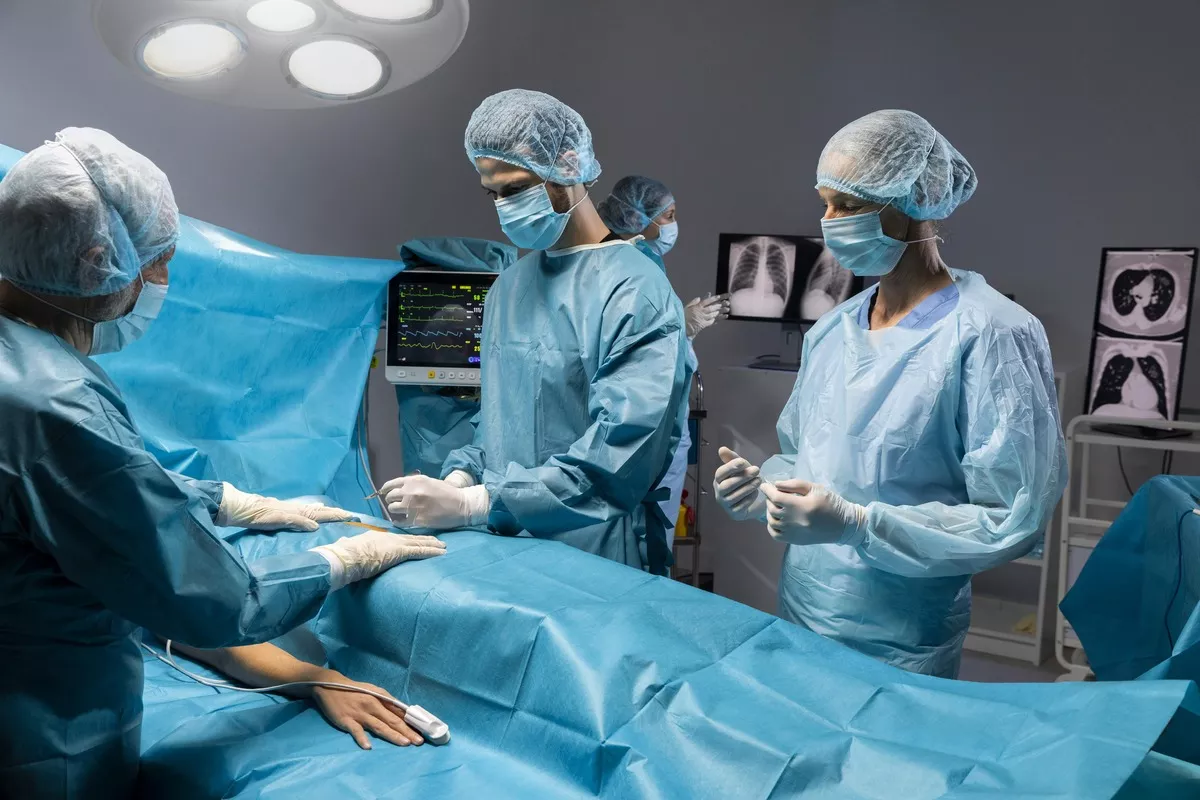Minimally invasive surgery, commonly referred to as laparoscopic surgery or "keyhole surgery," has brought about a transformative impact in the field of medicine. This pioneering approach empowers surgeons to undertake intricate procedures using smaller incisions, leading to quicker recovery periods, diminished discomfort, and enhanced overall patient results. Exploring further, we uncover the advantages of laparoscopic surgery and its techniques within this blog.
What Is Laparoscopic Surgery?
Laparoscopic surgery introduces a transformative approach by employing a laparoscope—a thin, telescopic rod featuring a camera at its extremity—to gain visual access to the abdominal and pelvic cavities. In a departure from the extensive incisions typically associated with traditional open surgery, laparoscopic procedures adopt a minimally invasive strategy, utilizing two to four small incisions, each measuring half an inch or less. These diminutive incisions play a crucial role as entry points for both the laparoscope and specialized surgical instruments. This technique not only facilitates enhanced visualization of internal structures but also contributes to reduced postoperative discomfort, faster recovery times, and improved overall patient outcomes.
Advantages of Laparoscopic Surgery
- Minimally Invasive Approach: The hallmark of laparoscopic surgery is its minimally invasive nature. By avoiding large incisions, patients experience less trauma to surrounding tissues, reduced blood loss, and minimal scarring.
- Faster Recovery: Compared to open surgery, laparoscopic procedures lead to quicker recovery times. Patients can return to their daily activities sooner, thanks to the smaller incisions and less tissue disruption.
- Reduced Pain: Postoperative pain is significantly lower with laparoscopic surgery. Smaller incisions mean less nerve damage and discomfort.
- Shorter Hospital Stay: Patients undergoing laparoscopic procedures typically spend less time in the hospital. This not only reduces healthcare costs but also allows patients to resume their normal lives faster.
- Improved Cosmetic Outcome: The tiny scars resulting from laparoscopic incisions are barely noticeable. Patients appreciate the aesthetic benefits of minimal scarring.
Techniques Used in Laparoscopic Surgery
- Diagnostic Laparoscopy: This exploratory procedure allows surgeons to investigate abdominal and pelvic issues. It is particularly useful when imaging tests fail to provide a clear diagnosis. During diagnostic laparoscopy, the surgeon may collect tissue samples for biopsy.
- Therapeutic Laparoscopy: Beyond diagnosis, laparoscopy can also treat various conditions. Some common therapeutic procedures include:
- Cyst, Fibroid, Stone, and Polyp Removals
- Biopsies
- Tubal Ligation and Reversal
- Ectopic Pregnancy Removal
- Endometriosis Surgery
- Urethral and Vaginal Reconstruction Surgery
- Hernia Repair Surgery
- Gallbladder Removal (Cholecystectomy) for Gallstones
- Appendix Removal (Appendectomy) for Appendicitis
- Bowel Resection Surgery (Colectomy)
- Rectal Prolapse Repair (Abdominoperineal Resection)
- Bladder Removal (Cystectomy)
- Prostate Removal (Prostatectomy)
- Adrenal Gland Removal (Adrenalectomy)
- Kidney Removal (Nephrectomy)
- Spleen Removal (Splenectomy)
- Stomach Removal (Gastrectomy)
- Liver Resection
Conclusion
The landscape of surgical interventions has been revolutionized by laparoscopic surgery, offering advantages that extend beyond medical outcomes to encompass patient comfort, aesthetic considerations, and cost-effectiveness. In the ever-evolving realm of technology, laparoscopy stands as a fundamental pillar of modern medicine, contributing to enhanced patient care on a global scale. It's crucial to emphasize that consulting with a qualified healthcare professional is essential to determine the optimal surgical approach tailored to your specific condition. Our utmost priority is your health and well-being.











